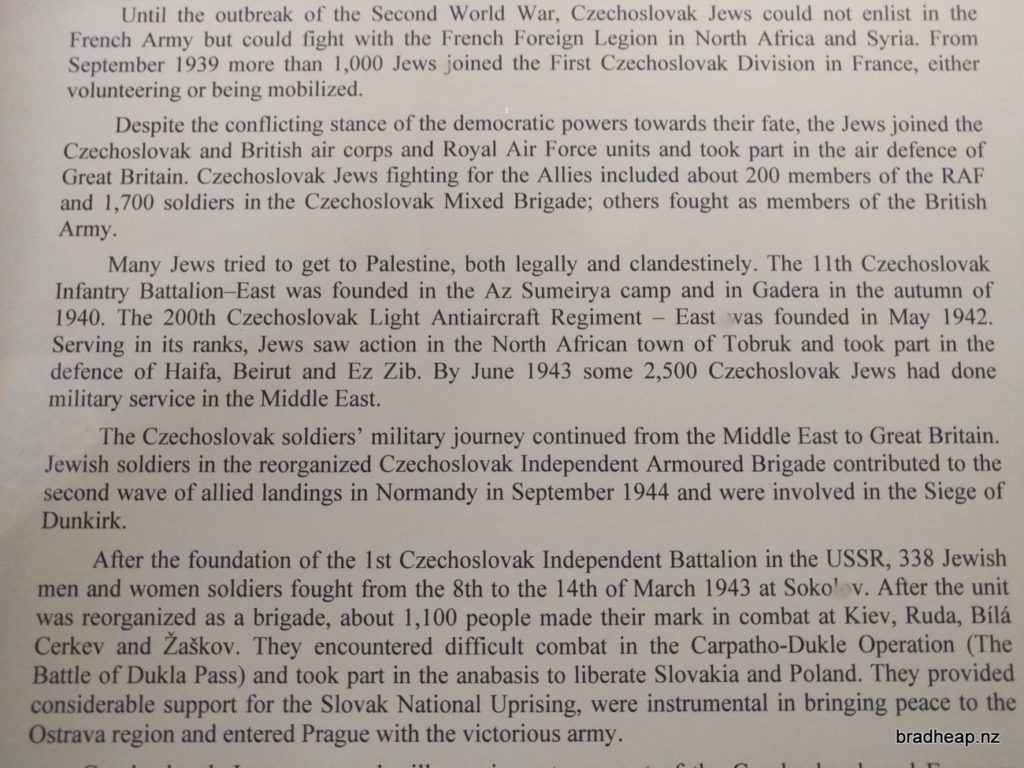I began my final day in Prague by walking from the hotel I was staying in near Wenceslas Square to Prague’s Jewish Quarter, Josefov. After getting quite lost trying to navigate the narrow streets of Prague’s Old City I found the ticket shop for the Jewish Museum.
I bought my ticket for the museum but, quite confusingly, I wasn’t able to figure out how to get from the ticket shop into the museum. When I went back to the ticket counter to ask, I was quickly told that the museum was in fact a series of buildings around Josefov that the ticket would get me into. Now in possession of a map showing a path I should take around the neighbourhood I headed off to the first building, the Maisel Synagogue.
The Maisel Synagogue contained a number of ~500 year-old artifacts from Jewish life and worship in Prague. The most disturbing part of this history lesson was that from 1215 until 1781 Jewish residents had to wear some form of distinctive hat or badge or badge showing they were Jewish.


The next stop was the Pinkas Synagogue. This synagogue has been made into a memorial to Jewish victims of the Shoah (Holocaust). The walls of the Synagogue are covered with names, birth dates, and disappearance dates of the nearly 80,000 Jewish victims from Bohemia and Moravia. On the second level of the building is Jewish children’s artwork made during the second world war. Like many other Holocaust memorials the site is haunting and moving but its names and stories need to be remembered. The video below from the Jewish Museum shows this synagogue.
Behind the Pinkas Synagogue is the Old Jewish Cemetery with around 12,000 tombstones in an area of roughly one block. The path through the cemetery then leads to the Klausen Synagogue which houses exhibits on Jewish religious life for both the individual and as a family. Next door to this is the Ceremonial Hall which exhibits the history of the Prague Burial Society.


The final part of the Jewish Museum is the Spanish Synagogue. A few streets away from the other buildings this Synagogue was spectacular both inside and out. The exhibits inside this Synagogue covered the fate of Prague’s Jews in the lead up to and through the second world war.



One of the most interesting stories told here is of those Jews who fought with other countries armies during the war and helped liberate Prague.

After spending three hours engrossed in Prague’s sad but culturally significant Jewish history my friend and I walked back across the Old City to Havelské Tržiště (Havel’s Market) where we brought a few trinkets. We then had lunch at Burger King – for the simple experience of having a beer at Burger King – and walked along the Vltava River one last time before picking up our bags and heading to the train station.



